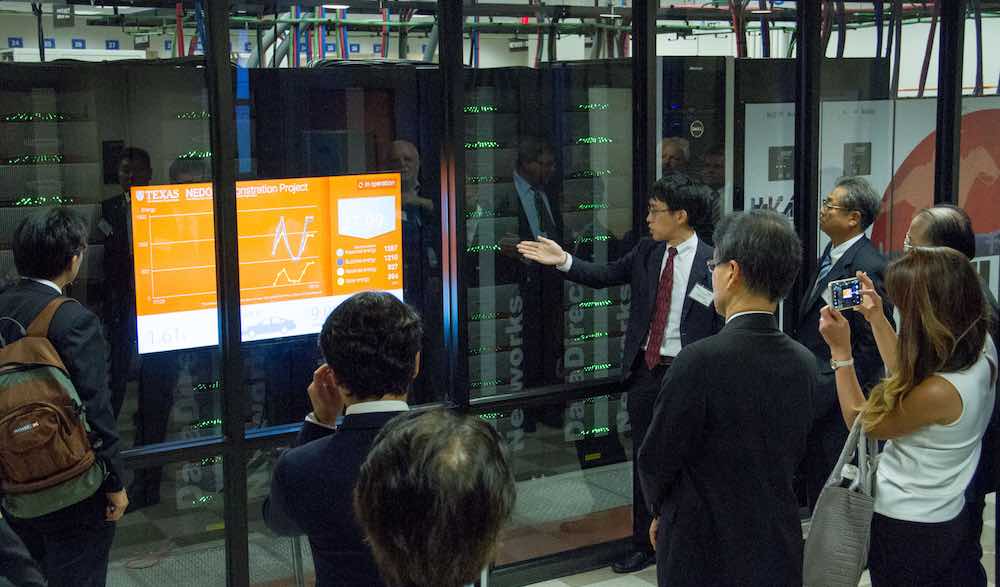
The Hikari project aims to demonstrate the potential of HVDC for data centers worldwide.
In this TACC podcast, host Jorge Salazar discusses the Hikari HVDC project with Toshihiro Hayashi and Jim Stark from NTT Facilities. The Hikari supercomputer at TACC is the first supercomputer in the US to use solar panels and High Voltage Direct Current, or HVDC for its power. Hikari hopes to demonstrate that HVDC works not only for supercomputers, but also for data centers and commercial buildings.
Engineers of the Hikari HVDC power feeding system predict it will save 15 percent compared to conventional systems. “The 380 volt design reduces the number of power conversions when compared to AC voltage systems,” said James Stark, director of Engineering and Construction at the Electronic Environments Corporation (EEC), a Division of NTT FACILITIES. “What’s interesting about that,” Stark added, “is the computers themselves – the supercomputer, the blade servers, cooling units, and lighting – are really all designed to run on DC voltage. By supplying 380 volts DC to Hikari instead of having an AC supply with conversion steps, it just makes a lot more sense. That’s really the largest technical innovation.”
The Hikari project is a collaboration headed by NTT Facilities, based out of Japan and with the support of the New Energy and Industrial Technology Development Organization, or NEDO. vNTT Facilities partnered with the University of Texas at Austin to begin demonstration tests of the HVDC power feeding system for the Hikari project in late August 2016. What it aims to show is that the high-capacity HVDC power equipment and lithium-ion batteries of Hikari can save 15 percent in energy compared to conventional systems.
Download the MP3 * Read the Full Story



